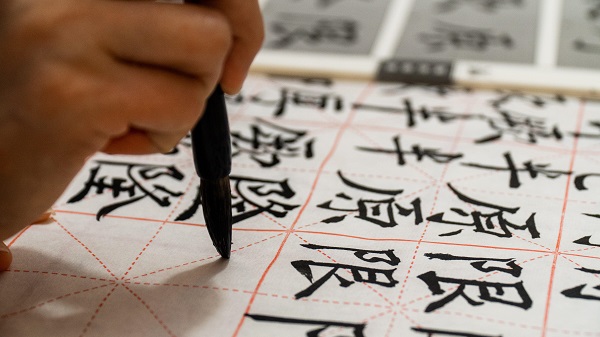4 Reasons NOT to Learn How to Handwrite Chinese Characters

Should you learn to hand-write characters?
Disclaimer: If you’re dead-set on learning to hand-write Chinese characters, don’t let me stop you. For some people (myself included), it’s massively fun, and it definitely helps you remember the words you are writing.
But in order to make an informed choice, there are four things you must consider.
#1 Learning to hand-write characters will take a lot longer
Compared to learning to recognize Chinese characters, learning how to hand-write them requires remembering a lot more “stuff”.
If your goal is to be able to read Chinese, it is perfectly normal to ignore concepts like “radicals” and “stroke order”. Yet, if you want to hand-write characters, these concepts are essential — and they pile on a tremendous amount of extra things for you to both remember and practice.
Compared to learning to recognize characters, learning how to hand-write them is also a much more laborious physical task.
The time it takes to physically move your pen across a paper (or your finger across a screen) may only be ten seconds every time you are reviewing a word.
But when you consider you’ll be doing this action tens of thousands of times during the learning process, this adds up quickly.
Assuming you’re being efficient and decide to use spaced repetition to schedule your reviews, writing a character just 25 times across several years will likely be enough for you to really “master” it.
But consider that 25 reviews-per-word x 10 seconds-to-write-each-character x 2 characters-in-most-words x 5,000 words-in-the-HSK = 2.5 million seconds (or close to 700 hours).
That’s a long time.
On a tool like Hack Chinese, testing your recognition of a word might take just 3-4 seconds.
Across several years (and thousands of reviews), this time savings really adds up. What else might you do in the 500+ hours you save that could better increase your ability to communicate in Chinese? (See #4!)
#2 Hand-writing is not necessary in the modern world
On smartphones and computers, typing in Pinyin results in automatic conversion to characters.
For example, if you type “ni hao” on your device, 你好 will appear (once you set up Chinese language input settings). At that point, your task is simply recognition of characters in order to “write” in Chinese.
Even when taking the HSK (China’s official language proficiency exam) in China, students are asked to type in Pinyin and then choose (by recognizing) the correct character, not hand-write them. Some testing centers, especially those outside of China, provide both a ‘computer’ test and a ‘paper’ test. The paper test requires you to hand-write your answers, and is thus considered much more difficult, despite being graded the same. It’s no surprise why most students elect to take the computer test!
#3 Hand-writing doesn’t help you communicate
Let’s pretend you don’t know any Chinese.
In twenty-four hours, a Chinese person (who speaks no English) will arrive, and you want to be able to communicate with him as much as you can.
You have twenty-four hours to learn and practice any skills you’d like, with the best teachers and learning resources available.
How many of those hours will you devote to learning how to draw characters, a skill that almost certainly won’t make any difference on how well you are able to communicate?
To communicate in Chinese, you need to advance your reading, writing (typing + recognition), listening, and speaking skills.
When it comes to communicating in the modern world, hand-writing Chinese characters is categorically different: extremely interesting, but virtually useless.
#4 The opportunity cost is really expensive
In business school, students are taught to judge every decision by evaluating all the things they will have to give up by making a certain choice.
Many students assert, “learning to hand-write characters will help me never forget them!”
It’s probably true.
But considering the extra time it takes to learn how to hand-write characters, you must consider the opportunity cost.
Would you rather know how to hand-write 100 words, or be able to recognize and use 1,000?
“I’m not in a rush! I don’t mind taking my time.”
Most students who say this eventually give up learning Chinese. They want to communicate in Chinese (a notoriously challenging task), then get bogged down for hundreds of hours practicing a skill they’ll never use outside of their learning apps.
For most students, it’s far better to save that time and practice those skills that will actually help you communicate, pass proficiency exams, impress your friends and leave you feeling motivated: reading, writing (typing Pinyin + recognizing characters), listening and speaking.
Successfully communicating in Chinese will feel spectacular, and that will generate tremendous amounts of motivation. I encourage you to drive straight towards this outcome, without long detours (like learning how to hand-write characters).
Author’s short bio:
 Daniel Nalesnik, Founder of Hack Chinese
Daniel Nalesnik, Founder of Hack Chinese
Daniel moved to China in 2009 for a year of full-time Mandarin immersion at Peking University (in Beijing) and Fudan University (in Shanghai). In the years since, he has worked with teachers throughout China to discover what learning methods are most impactful for students of Mandarin Chinese.

